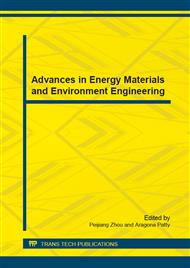p.189
p.193
p.197
p.205
p.211
p.216
p.220
p.225
p.230
A Comparative Study on the Removal of 2,2',4,4'-Tetrabrominated Diphenyl Ether (BDE-47) by Four Different Methods
Abstract:
The zero-valent iron (ZVI) particles were synthesized by the aqueous phase reduction, and the tapping mode image of atomic force microscope (AFM) showed that the diameter of the ZVI particles was in the range of 90 nm - 400 nm. By comparison of the debromination of BDE-47 by sunlight, ZVI, ZVI impregnated activated carbon (ZVI/AC) and ZVI impregnated ion exchange resin (ZVI/IER), the debromination effect was found to descend in the following order: ZVI/IER > ZVI/AC > ZVI > sunlight. Second order and first order kinetic models were used for the fitting of the debromination data of BDE-47. Results show that the debromination data of BDE-47 by the sunlight, ZVI, ZVI/AC and ZVI/IER in the current study are generally best described by the pseudo first order equation. Meanwhile, the debromination data of BDE-47 by the ZVI and ZVI/IER can also be described by the pseudo second order equation.
Info:
Periodical:
Pages:
211-215
Citation:
Online since:
December 2014
Authors:
Price:
Сopyright:
© 2015 Trans Tech Publications Ltd. All Rights Reserved
Share:
Citation:


